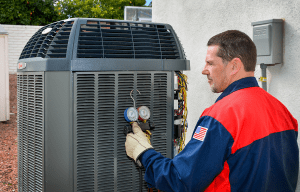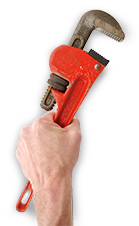Your Phoenix AC Might Be Oversized—And Costing You Money
Is Your Phoenix AC Too Powerful?
Your Phoenix AC might be working too hard—and not in a good way. Many homeowners think a bigger unit means better cooling, but that’s not always true. An oversized system can lead to higher energy bills, less comfort, and more wear and tear. In this article, we’ll break down why size matters and how to make sure your system is just right for the desert heat.
Too Much AC Isn’t Always a Good Thing
In Phoenix, where temperatures often rise above 110 degrees, many homeowners assume that bigger is better when it comes to air conditioning. But installing a unit that’s too large for your home can actually cause problems. Oversized systems may cool the house too quickly, leading to uncomfortable indoor air and higher energy bills.
The Problem with Oversized Units
When your AC unit is too powerful, it turns on, blasts cold air, and shuts off quickly. This might sound efficient, but it isn’t. This quick cycling doesn’t allow the system to properly dehumidify the air, leaving you with a home that feels damp, even in Arizona’s dry heat. The result? A space that feels less comfortable than it should.
What Is Proper AC Sizing?
Proper air conditioner sizing means matching your unit to the specific needs of your home. That includes square footage, window placement, ceiling height, and insulation. You also need to consider local weather, which in Phoenix means preparing for long, scorching summers.

Short Cycling Wastes Energy
An oversized air conditioner tends to short cycle—turning on and off rapidly throughout the day. This wastes electricity and places unnecessary stress on system components. Over time, this wear and tear adds up, often resulting in higher repair costs and shorter system life.
Your Comfort Takes a Hit
Even though the air might feel cool at first, short cycling doesn’t allow the AC to run long enough to evenly distribute cool air throughout your home. You may notice that some rooms feel colder while others stay warm. This imbalance is another sign that your air conditioner isn’t properly sized.
Humidity Problems in the Desert?
Even in the desert, moisture management matters. While Phoenix doesn’t have the same humidity as coastal cities, homes still generate moisture through activities like cooking, bathing, and running appliances. An oversized AC doesn’t run long enough to remove this humidity, creating a sticky, uncomfortable indoor environment.
Uneven Cooling Throughout the House
One of the most frustrating signs of an improperly sized AC is uneven temperature throughout your home. Some areas may feel like a freezer while others stay uncomfortably warm. This happens because a large unit cools the nearest rooms quickly and shuts off before the air reaches distant areas.
How Oversized AC Hurts Your Wallet
Oversized systems not only cost more upfront but also cost more over time. The unit consumes more electricity because it’s running inefficiently. Plus, frequent on/off cycling leads to early equipment failure. When you add up energy waste, repair bills, and reduced system life, the financial impact becomes significant.
It’s Not Just About Square Footage
While the size of your home is a starting point, it’s not the only factor that matters for air conditioner sizing. Experts also look at insulation, number of windows, shade, ceiling height, and more. A professional calculation ensures your AC unit is the right fit—not too big, not too small.
Load Calculations Make the Difference
A Manual J load calculation is the industry standard for determining the correct AC size. It accounts for everything from ductwork to sun exposure. Skipping this step is a common mistake that many contractors make, especially when replacing an older unit with something “bigger and better.”
Big Units Can Cost More Upfront
A larger AC system might seem like an upgrade, but it often comes with added expenses. You may need bigger ducts, a larger pad, and even electrical upgrades. These hidden costs can turn a routine replacement into a major investment—all without adding comfort or value to your home.
Improving Efficiency Starts with the Right Size
If you’re serious about saving energy and money, it starts with the right air conditioner sizing. Many homeowners overlook this step and go straight to smart thermostats and insulation upgrades. But none of those help much if your AC is too big.
Oversizing Hurts System Longevity
Because oversized units cycle more often, they experience more wear and tear than properly sized ones. This frequent start-stop pattern leads to breakdowns and shortens the lifespan of your equipment. Investing in the right size now saves you from replacing the unit too soon later.
Check Your Ductwork Too
Proper ductwork matters just as much as the AC unit itself. If the ducts are too small or poorly sealed, your system won’t perform efficiently. Leaky or undersized ducts can cancel out the benefits of even the best HVAC efficiency tips.
Signs Your AC May Be Too Big
Wondering if your system is oversized? Look for signs like short run times, high electric bills, frequent breakdowns, and uneven cooling. If your AC shuts off within minutes or if your home feels damp, it’s worth getting a professional opinion.
Efficiency Matters in the Desert
In Phoenix, energy efficiency is more than a buzzword—it’s a necessity. Running your AC day and night adds up quickly. Following smart HVAC efficiency tips and ensuring the unit is sized correctly helps you stay cool without draining your bank account.
Time to Get an AC Evaluation?
If you suspect your AC isn’t the right size, it’s a good idea to call an expert. A quick evaluation can reveal if air conditioner sizing is the cause of high bills or poor comfort. Don’t wait until it breaks down in the middle of July.
Simple HVAC Efficiency Tips
Try these easy HVAC efficiency tips: change filters monthly, use blackout curtains during the day, and set your thermostat to 78°F when you’re home. Small changes can make a big difference—especially when paired with a properly sized system.
Get a Second Opinion
If your current contractor insists on upsizing your AC without running a proper load calculation, get a second opinion. You deserve a system that works for your home—not just one that looks good on paper.
Chas Roberts is Here to Help
Stay updated with our latest home maintenance tips and guides by visiting our blog regularly.
Your home is your haven, and we’re here to help you keep it running smoothly.
Read our customer testimonials and check out our newest deals and coupons to discover why Chas Roberts is the right fit for you!

